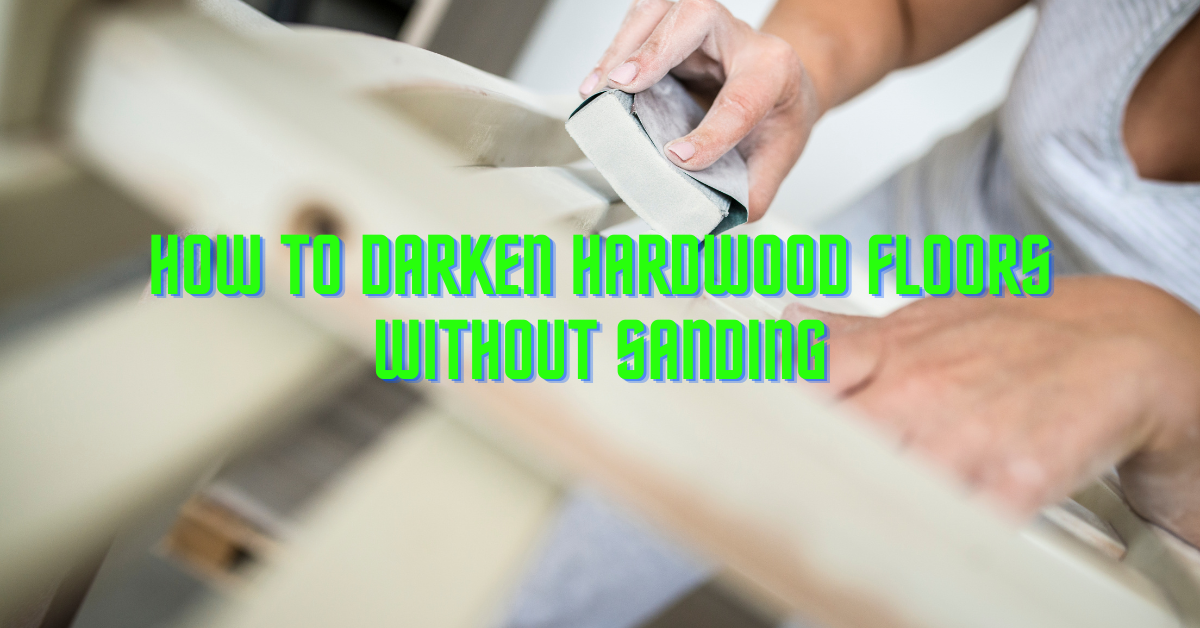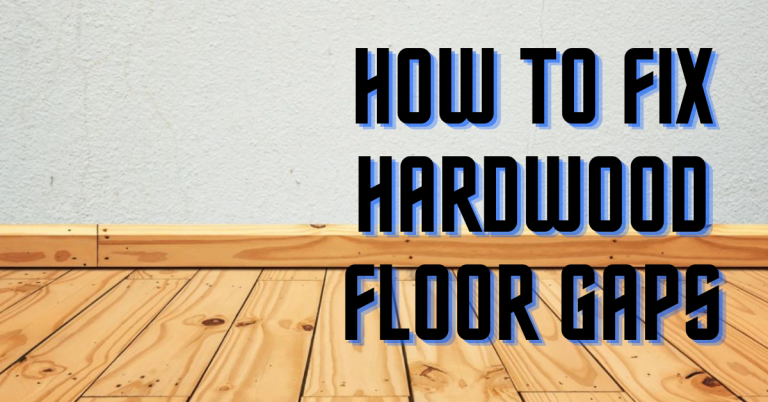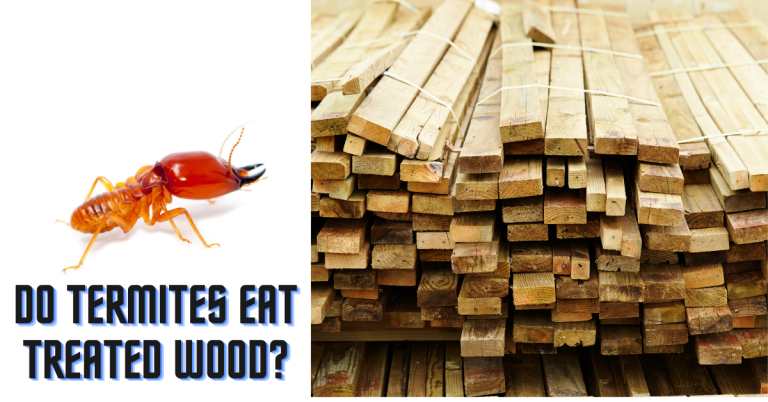How To Darken Hardwood Floors Without Sanding
Hardwood floors are a timeless option for every area in your home. It beautifies, warms, and adds value to your home. Hardwood flooring is not only attractive, but it is also long-lasting and simple to maintain. There are numerous types of hardwood flooring to pick from, ensuring that you will find the ideal floor for your home and the techniques required on knowing how to darken hardwood floors without sanding is important.
It can be a delight to live in an apartment with hardwood floors until you discover that your dog has left his mark on the once-pristine surface. You could attempt sanding and refinishing the wood, but who has time for that? Another alternative is to cover the unattractive flaws with a dark wood stain, which is where things get interesting. Dark wood stains can be applied in only one layer utilizing a specific application process that eliminates the need to sand.
Sanding wood floors can be a time-consuming, dusty, and tough operation. We’ll look at a different option in this article: how to darken hardwood floors without sanding. This method will give your flooring a rich, dark look that will stay for years. Shall we?
All at a Glance
Can you darken hardwood floors without sanding?
Yes, it is possible to darken hardwood floors without sanding provided the surface isn’t rough. All you need to do is to make sure the hardwood floor is clean enough to be darkened. You can accomplish this by using a degreaser to clean the surface. Most people prefer to sand their hardwood floor before refinishing them; however, sanding the floor isn’t always necessary before staining it.

Why you shouldn’t sand your hardwood floor
Although, sanding hardwood floors can be a great want to restore their appearance and extend their life, but there are some drawbacks to be aware of before getting started.
- Sanding can remove a substantial quantity of the floor’s surface material, which might be a problem. This means that, if the need arises, the floor may not be able to be restored to its previous condition.
- It can generate lots of dust, which can in turn be difficult to clean up and constitute a health risk. This is one of the reasons why it is important to put on a mask and goggles when sanding to protect you from dust.
- Sanding can be quite expensive and time-consuming.
How to darken hardwood floor without sanding
Here’s a step-by-step process to darken your hardwood floor. You’ll need the following supplies:
- Degreaser
- Clean rags
- Vacuum cleaner
- A soft brush
- Sealant
- Clean the hardwood
The first thing to do is clean the floor. When cleaning, avoid getting dirt on your floor because this may cause the stain to not adhere properly. Get rid of all the dust and other particles that have racked upon it, as well as any wax or polish that has built up over time. This is equally important since they can and will block the new stain’s adhesion to your hardwood’s surface.
2. Apply a wood conditioner on the surface of the wood
To achieve a smoother surface at the end of the day, it is usually recommended to use a pre-stain wood conditioner. The first layer helps you eliminate stain pockets, which appear when the stain does not adhere well to certain parts of your flooring. You can also stain the floor from the bottom up before staining the top. By doing this, you’ll most certainly produce a better finishing touch with a deep color.
Using a pre-stain wood conditioner is a one-of-a-kind method for darkening your flooring without sanding. To be candid, this is a fantastic DIY method for darkening those parts or all of the hardwood that has faded due to aging.
3. Use a darker stain on the hardwood
You can immediately spot regions where the color of the wood has faded away. Use hardwood flooring boards with irregular graining to darken the color. It’s meaningless to make the hardwood floor darker if it’s already dark. As a result, removing the dark stain on the hardwood with a dark varnish is a far superior solution.
However, if the wood floor is light-colored, a more sophisticated staining DIY method using pine or white oak is a good job plan. You should use a paintbrush to apply two different layers of stain to the floor surface when staining. Dark brown and ebony are appropriate color choices for this.
4. Plan a protective treatment for the hardwood
After you must’ve stained the hardwood flooring, a protective layer is required. Your floor will be protected from scratches, gouges, and other water-related damage with a protective coat. It is advisable that you treat your existing flooring before recovering your old flooring. To do this, you must first reseal it with a sealer, then apply polyurethane, varnish it, and then look for an acid-cured finishing touch.
5. Apply a sealer
Penetrative sealants have a strong tendency to seep into the wood. As a result, it’s a good idea to use it at least twice a year. This will ensure that your flooring design lasts a long time.
6. Apply polyurethane
Polyurethane coating is essential due to its superior moisture resistance. If you want to develop an abrasion-resistant coating, you can choose from a variety of possibilities near you.
Depending on your preference, you can either use water or oil-based polyurethane on the floor. Before you choose polyurethane at all, make sure you get the right one for the job as it comes in satin, matte, semi-gloss and high gloss finishes. If you’re concerned about your health, you should avoid using oil-based polyurethane because it contains more volatile organic compounds (VOCs). You can settle for a brush, wipe or spray for even distribution of the polyurethane.
7. Protect the hardwood floor by varnishing it
You can use wax or shellac varnish to seal the hardwood floor. As a result, you should use a low-sheen, natural-looking finish. Because it is not as durable as polyurethane, it is much thinner.
Shellac varnish is more environmentally friendly compared to wax varnish. The nice part is that if you want a darker hardwood floor, you can always mix shellac with a matte finish. This is a significantly more effective protective solution for restoring the dark color of your hardwood floor. It can be used to restore your hardwood property at any time.

What kind of stain do you need to darken hardwood floor?
Gel stains are an excellent choice for darkening hardwood floors. The gel’s thick flow prevents sunlight from flowing through. In the sense of it, this makes the hardwood floor beautiful and unique. If you want a darker finish, the dark tone stain markings should be considered.
How long does a stain last on hardwood floor?
The stains can last anywhere from a year to seven years. On average, it can last around 4 years before peeling and blistering. If you apply a protective sealer over the wood stain, it will last longer on hardwood floors. However, your wood stain will wear out and peel off quickly due to stiletto heels, furniture, foot traffic, pet claws, and other factors.
If you don’t mind removing it, use a protective sealer to give your hardwood floor an extra layer of protection. This is practically possible only when you replace your old floor with gel stain, polyurethane, and epoxy layer. The new layer is likely to last for a long period, requiring no more maintenance or flooring restoration work.
Is refinishing or replacing hardwood flooring more cost-effective?
Hardwood floors are almost always less expensive to refinish than to replace. This is because you can DIY for a fraction of the price of a new set of hardwood flooring. Refinishing also takes less time in general, so if you’re in a rush or have other things on your schedule, this may be the best option.
If you think that replacing your floors is a better alternative, then you’ll need to remove all of your furniture as well as the flooring materials from your home first. This is a time-demanding process that not everyone is capable of completing. Most people need several days to finish a task like this, which means extra time spent without having to furnish your home.
Conclusion: How To Darken Hardwood Floors Without Sanding
Applying too much stain to your hardwood floor at once can result in huge problems and mistakes with the overall appearance of the floor, so don’t try to rush it. It is preferable to apply a little at a time, in portions, and then go over the entire floor once you have finished.
Now that you have figured out how to darken hardwood floors without sanding, if you want to revitalize your hardwood flooring, you should think about all of the DIY solutions listed above. It will eventually assist you in deciding whether to replace your current flooring or restore it. As long as the hardwood floor is clean, degreased, and buff before applying the wood stain.
This is to ensure that the floor is well prepared to absorb the wood stain and that the finish is smooth.






